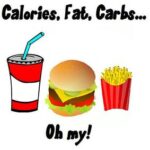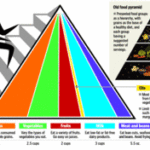Low-carb diets cut out a large portion of the fruits, vegetables and grains found in typical diet programs. Instead, these diets focus more on protein and fat, along with the less starchy vegetables. If you’re tired of weight loss programs that deprive you of your regular foods while providing only mediocre results, read on to find out how to start a low-carb diet and incorporate meat, eggs and fat back into your diet.
Tip 1: Keep carbohydrate levels low, but don’t exclude them completely.
Eat 50 to 150 grams of carbohydrates every day, advises the Mayo Clinic. Different low-carb diet plans suggest a range of specific foods to avoid and incorporate. Decide on a particular plan or follow the general guidelines of most such diets by avoiding sugars and starches. Examples of foods to forget about, at least at the beginning of your diet, include potatoes, most fruits and fruit juice. Focus on fibrous complex carbohydrates, such as broccoli, cauliflower and other vegetables. Most plans suggest cutting out corn, bread and pasta, especially at the beginning of your diet. This gives your body time to readjust to the new food plan and begin accessing its own fat stores more efficiently.
Tip 2: Choose the right fat and protein.
Yes, you increase your fat and protein intake on low-carb diets. No, this does not mean that bacon should become one of your new main food groups. Focus on lower-fat types of meat, including chicken, turkey and fish. Fatty fish actually provides good fat, such as essential fatty acids, so named because your body must have these fats to operate. Include other meat such as beef and pork as well, but don’t eat these exclusively. Also, choose less fatty cuts of these meats. Increase your fat intake healthfully by using olive oil and other fats with high levels of monounsaturated fat. Measure fat servings carefully, as you can easily overdo in this area if you only “eyeball” a serving.
Tip 3: Know what to expect.
Many dieters lose three to five pounds the first week, regardless of the diet they choose. This occurs as the body loses water weight, a side effect of eating a smaller volume of food. Drink plenty of water throughout your diet to ensure adequate hydration. Aim for 8, 8-oz. glasses of water per day and more in extremely hot weather or if you exercise for more than 30 minutes per day.
Low-carb diets benefit people who find dieting to be a form of deprivation. This is because higher levels of protein and fat take longer to digest and satiate the appetite better than high-carb food. Keep a close count of your calories though. Never skip meals just because you don’t feel hungry. Cutting your calories down too low, under 1200 calories daily for most people, causes the metabolism to slow down as your body attempts to save you from starvation.
Tip 4: Getting Started
The low-carb diet is easy to understand and easy to follow compared to many other diets. Cut sugar and simple carbs, focus on healthy protein and fat, and watch the pounds melt away. Stock your kitchen before you start your diet. Take the opportunity to remove undesirable food to squelch any urge to cheat on your new diet. Look for a local or online support group where you can share your triumphs and challenges along the way with others who understand and support your lifestyle change. Always consult your physician before beginning any new diet program. He can give you important advice based on your individual circumstances.
Sources:
Mayo Clinic: Low-Carb Diet: Could It Help You Lose Weight?




